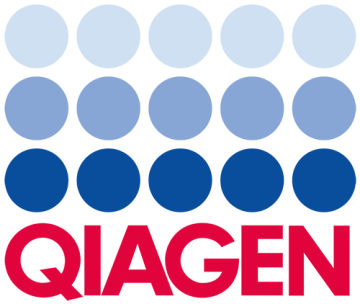April Mediated Signaling
A proliferation-inducing ligand (APRIL), also known as TNF and ApoL related leukocyte expressed ligand 2 (TALL2), is a recently identified TNF ligand family member implicated in immune regulation. APRIL is a type II membrane protein with a predicted cytoplasmic domain, a hydrophobic transmembrane region and an extracellular domain of 201 amino acids. APRIL shows a unique maturation pathway among the TNF ligand family members as it is not detectable as a membrane anchored protein at the cell surface, but is processed in the golgi apparatus prior to its secretion. APRIL acts solely as a secreted factor.Two members of the TNF receptor family, the transmembrane activator and calcium modulator cyclophilin ligand interactor (TACI) and B-cell maturation antigen (BCMA), have been identified as receptors that can bind APRIL...
Pathway Summary
A proliferation-inducing ligand (APRIL), also known as TNF and ApoL related leukocyte expressed ligand 2 (TALL2), is a recently identified TNF ligand family member implicated in immune regulation. APRIL is a type II membrane protein with a predicted cytoplasmic domain, a hydrophobic transmembrane region and an extracellular domain of 201 amino acids. APRIL shows a unique maturation pathway among the TNF ligand family members as it is not detectable as a membrane anchored protein at the cell surface, but is processed in the golgi apparatus prior to its secretion. APRIL acts solely as a secreted factor.Two members of the TNF receptor family, the transmembrane activator and calcium modulator cyclophilin ligand interactor (TACI) and B-cell maturation antigen (BCMA), have been identified as receptors that can bind APRIL. APRIL promotes B-cell proliferation by binding to the BCMA and TACI receptors, which are expressed on resting and activated B-cells. In addition, TACI has been found on a subset of activated T cells.Engagement of BCMA activates JNK, p38 MAPK and the transcription factors NF-κB and Elk1 via TRAF1, 2 and 3, whereas cross-linking of TACI activates the transcription factors NF-κB and NFAT. TACI intracellular domain interacts with TRAF 2, 5, and 6 and transduces signals necessary for B-Cell proliferation and survival. TRAFs recruit IKK-activating kinases such as NIK, MEKK1 and TAK1 to phosphorylate IKK, which leads to NF-κB activation. A family of inhibitory proteins, IκBs, binds to NF-κB and controls the activity of NF-κB. Exposure of cells to extracellular stimuli that perturb redox balance results in rapid phosphorylation, ubiquitination, and proteolytic degradation of IκBs. This process frees NF-κB from the NF-κB/IκB complex and enables NF-κB to translocate to the nucleus where it regulates gene transcription.APRIL is predominantly expressed in malignant tumors and promotes growth in several malignant tumor cell lines in vitro and in vivo.
April Mediated Signaling Genes list
Explore Genes related to April Mediated Signaling
CHUK
Human
component of inhibitor of nuclear factor kappa B kinase complex
ELP1
Human
elongator acetyltransferase complex subunit 1
FOS
Human
Fos proto-oncogene, AP-1 transcription factor subunit
IKBKB
Human
inhibitor of nuclear factor kappa B kinase subunit beta
IKBKE
Human
inhibitor of nuclear factor kappa B kinase subunit epsilon
IKBKG
Human
inhibitor of nuclear factor kappa B kinase regulatory subunit gamma
JUN
Human
Jun proto-oncogene, AP-1 transcription factor subunit
MAP2K4
Human
mitogen-activated protein kinase kinase 4
MAP2K7
Human
mitogen-activated protein kinase kinase 7
MAP3K1
Human
mitogen-activated protein kinase kinase kinase 1
MAP3K14
Human
mitogen-activated protein kinase kinase kinase 14
MAPK1
Human
mitogen-activated protein kinase 1
MAPK10
Human
mitogen-activated protein kinase 10
MAPK11
Human
mitogen-activated protein kinase 11
MAPK12
Human
mitogen-activated protein kinase 12
MAPK13
Human
mitogen-activated protein kinase 13
MAPK14
Human
mitogen-activated protein kinase 14
MAPK8
Human
mitogen-activated protein kinase 8
MAPK9
Human
mitogen-activated protein kinase 9
NFAT5
Human
nuclear factor of activated T cells 5
NFATC1
Human
nuclear factor of activated T cells 1
NFATC2
Human
nuclear factor of activated T cells 2
NFATC3
Human
nuclear factor of activated T cells 3
NFATC4
Human
nuclear factor of activated T cells 4
NFKB1
Human
nuclear factor kappa B subunit 1
NFKB2
Human
nuclear factor kappa B subunit 2
REL
Human
REL proto-oncogene, NF-kB subunit
RELA
Human
RELA proto-oncogene, NF-kB subunit
RELB
Human
RELB proto-oncogene, NF-kB subunit
TNFRSF13B
Human
TNF receptor superfamily member 13B
TNFRSF17
Human
TNF receptor superfamily member 17
TRAF1
Human
TNF receptor associated factor 1
TRAF2
Human
TNF receptor associated factor 2
TRAF3
Human
TNF receptor associated factor 3
TRAF5
Human
TNF receptor associated factor 5
TRAF6
Human
TNF receptor associated factor 6
Products related to April Mediated Signaling
Explore products related to April Mediated Signaling
QuantiNova LNA PCR Focus Panel Human TNF Signaling Pathway
GeneGlobe ID: SBHS-063Z | Cat. No.: 249950 | QuantiNova LNA PCR Focus Panels
QuantiNova LNA PCR Focus Panel
RT² Profiler™ PCR Array Human TNF Signaling Pathway
GeneGlobe ID: PAHS-063Z | Cat. No.: 330231 | RT2 Profiler PCR Arrays
RT2 Profiler PCR Array
QuantiNova LNA Probe PCR Focus Panel Human TNF Signaling Pathway
GeneGlobe ID: UPHS-063Z | Cat. No.: 249955 | QuantiNova LNA Probe PCR Focus Panels
QuantiNova LNA Probe PCR Focus Panel


